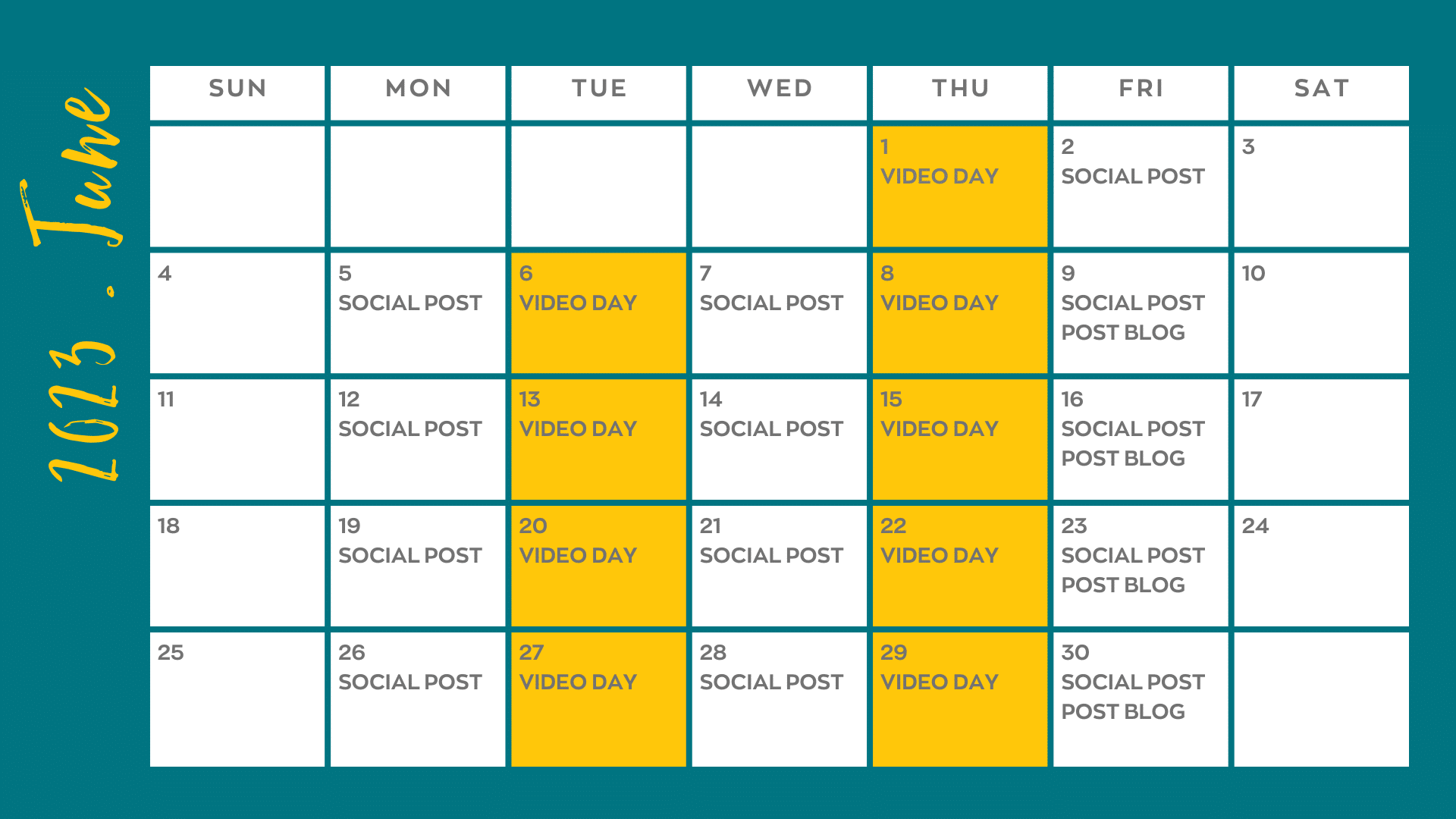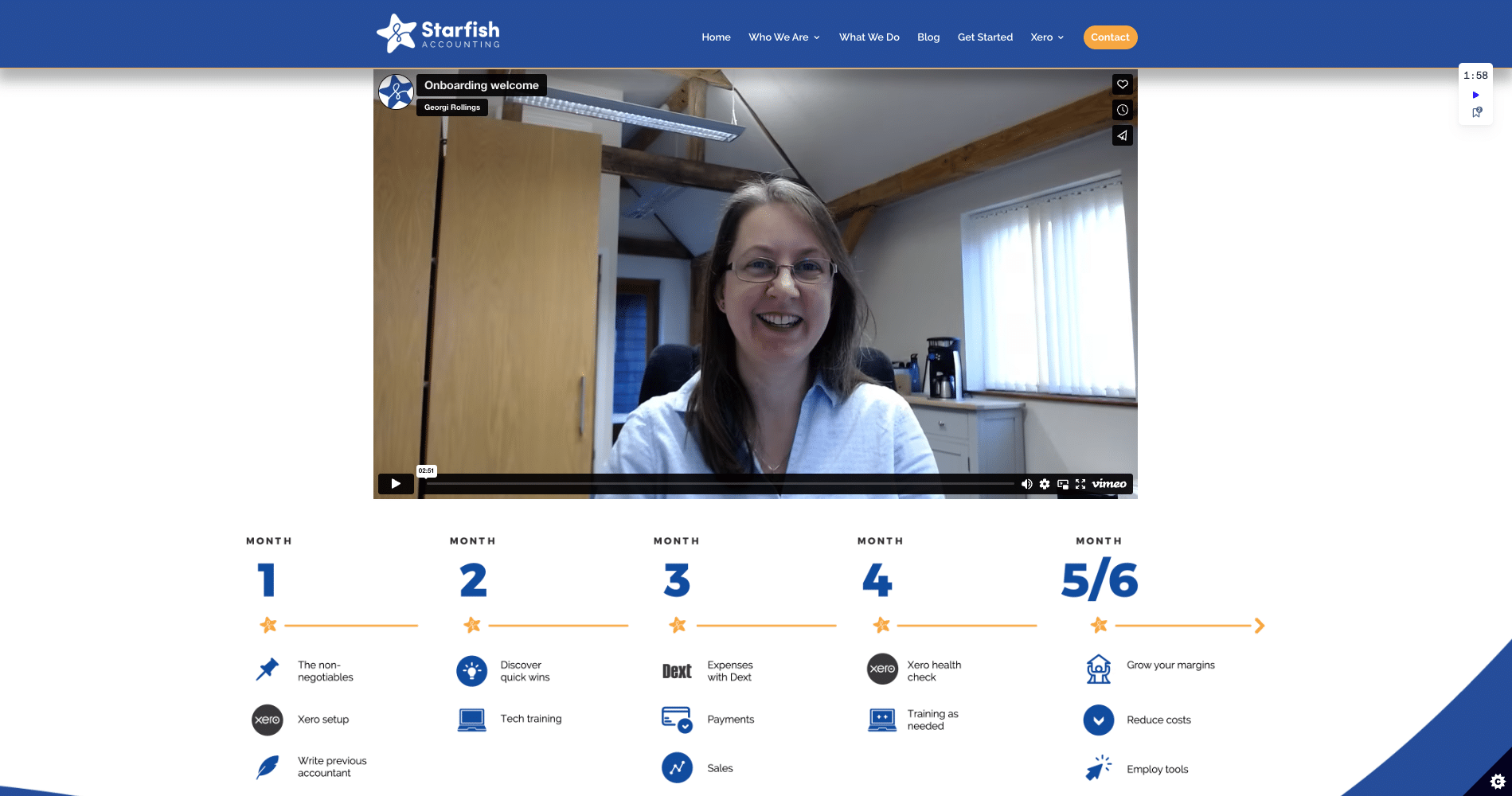
Recording videos can feel intimidating. Your concerns about how you’ll be judged, or feeling as if you don’t have anything interesting or new to say, can hold you back. Planning and organising every element of your video will alleviate your anxiety about what to say, and will help you be more confident in creating a seamless recording experience. You’ll feel more motivated to keep making videos and establish a consistent rhythm.
Now, let’s help get you on a path to create consistent video content you can be proud of..
Prepare to make the recording process as seamless as possible
Thorough preparation will make sure your video aligns with your overall marketing goals, resonates with your ideal audience, and gets your message across.
Here’s how you can start to prepare your videos:
- What are your goals for video content? Defining these goals can help give you clarity by giving you a purpose behind what you are trying to achieve with video. When you have a clear understanding of your goals, such as increasing brand awareness, driving website traffic, generating leads, boosting sales, educating your audience, or enhancing customer engagement, it provides clarity for your video strategy.
- Who specifically is your video for? Why do they need to watch it and how will it help them? Make this crystal clear in your video to keep people engaged and interested.
- Where do you want people to view your video? Whether it be your website or social media, knowing specifically where you want your video to be seen will help guide you on what format to record it in and how long to make it. For example if you’re posting an Instagram story it’s always better for the video to be portrait and be short snippets. If the video is for your website, it would be better in a landscape format and be at least a couple of minutes long.
- What do you actually say? This always comes back to why this person should watch this video and what you actually want them to do after watching it. What’s the call to action? What’s the number one message you want to get across? Establishing this can help give you some clarity in the contents of your video.
To make sure your video has the most value for you and your audience, start here:
Get straight to the point. Don’t spend time introducing yourself, your company or what you do. If people are coming across the video it’s likely they already know this because they’ve come across you on your website or through social media. If you decide to create bio videos for each team member to introduce themselves, this is an exception to the rule.
Prepare yourself a script and make sure you have ONE key message you want to get across. If the viewer doesn’t take away anything else what is the main point you want them to take away? Once you have this nailed down then you can start thinking of supporting points.
Practice by reading your key points or your script aloud. You can even have a few practice recordings or practice in front of a mirror. This helps you remember all the points you want to get across, reduces errors in the recording process, and will help you be more comfortable in front of a camera.
Have a high quality camera and good lighting. For most of us we carry a high quality camera around in our back pocket, our smartphone. You don’t need fancy equipment to help you get started. You also don’t need fancy lighting equipment. In fact, good natural lighting is always best when it comes to recording videos. If you find yourself recording your videos at night do your best to get a good angle so people can see your face. You can also purchase a ring light to help. For more information on how you can get the best lighting, audio and editing for your firm here is the DIY video process for accountants: Lighting, audio, and editing.
Start small with your video goals and build up consistency
Beginning with achievable goals set you up for small wins and bigger wins further down the line. It’s an opportunity to learn and grow at a comfortable pace, gradually honing your skills and gaining confidence along the way.
You can start building up your video muscle by regularly using video throughout your firm’s systems and processes.
Here are 5 ways to build consistency in producing video content for your socials or website:
1. Use your list of client questions and identify which would work best for video content:
- Then, list out blog topics you’ve already done and take a few key points for video content. Start to prioritise your list based on how many times you’ve been asked or how important you feel it is.
2. Create a schedule in your calendar to keep you on track
- Make sure these goals are realistic. For example, begin by scheduling enough time in your calendar for 1 video a week for a month, then 2 videos a week for the second month, then 3 videos a week for the 3rd month and so on. You’ll have a full library of video content before you know it.
- Here’s how you might schedule out your marketing:

3. Create a system to follow every time you or your team record a video.
- Streamline your video creation by documenting your process in an easy to follow step by step format. This will help you go through the process more quickly and seamlessly everytime you want to record a video.
4. Stick to a routine and your calendar.
- Sticking to a routine is vital to help with consistency. Dedicate specific days and times for your video creation process, whether it’s brainstorming, scripting, shooting, or editing. By incorporating these activities into your regular schedule, you’ll create a sense of discipline and ensure that content creation becomes a habitual part of your routine.
- If you find yourself struggling with keeping to your routine, seek help from team members. Getting your team on board can help take a load off and maintain consistency.
5. When you can’t stick to your routine, embrace being flexible.
- While consistency is crucial, life can sometimes throw unexpected curveballs. Be prepared to adapt and be flexible in your content creation process. Be transparent with your audience and team when your content is less consistent or looking a little bit different.
To get started, integrate video into your existing systems
- Training videos for your team and clients – Imagine a new team member or client is joining you in a month’s time. Think about all of the specific systems you have in place that they will need to know about. Make a list of these things and start recording videos for them to refer to. The best part of this is they won’t need to come back and ask you the same questions because it will all be on video for them to look at again and again. This will save you time and help prevent frustrations in the future.
- Pre proposal videos for prospective clients – send prospects a video before your first meeting asking all of the frequent questions you get from clients when they sign up. This will help save time during the meeting and allow you to dig deeper into the surface level concerns they may be having.
- Proposal videos – When you send a proposal to a client start sending a video alongside it to walk them through it and clearly state what is included in the quote and how it will help them. This will help build trust because it will show that you really care about their problem specifically and will help clear up any doubts they may have before signing the quote.
- Onboarding videos – Once your new client has signed the quote you’ve sent over to them they might be feeling nervous about signing up to a service and regularly working with someone new. You can help ease some of the fears they might have by creating an onboarding video to help walk them through your firm’s process, what you need from them and how the relationship is going to work overall. Here’s a great example of how you might do this on an onboarding page from one of our client’s Starfish:

You may never feel ready to record videos. So just go for it.
Like with all new things you will always feel uneasy until you actually try it and give it a go. There are so many excuses to not get started or record videos. Instead of thinking up reasons not to record a video, try to channel your energy and focus on how it can help you, your team, your prospects and your clients. Your unique voice and expertise deserve to be heard and seen by the world, especially your ideal audience.
You will get more direction and help with ideas for video content, download the Kick Start Content Guide (by the way it’s free if you’re a PF client). There is also an option to sign up for monthly coaching calls to help keep you accountable to the videos you want to create.

